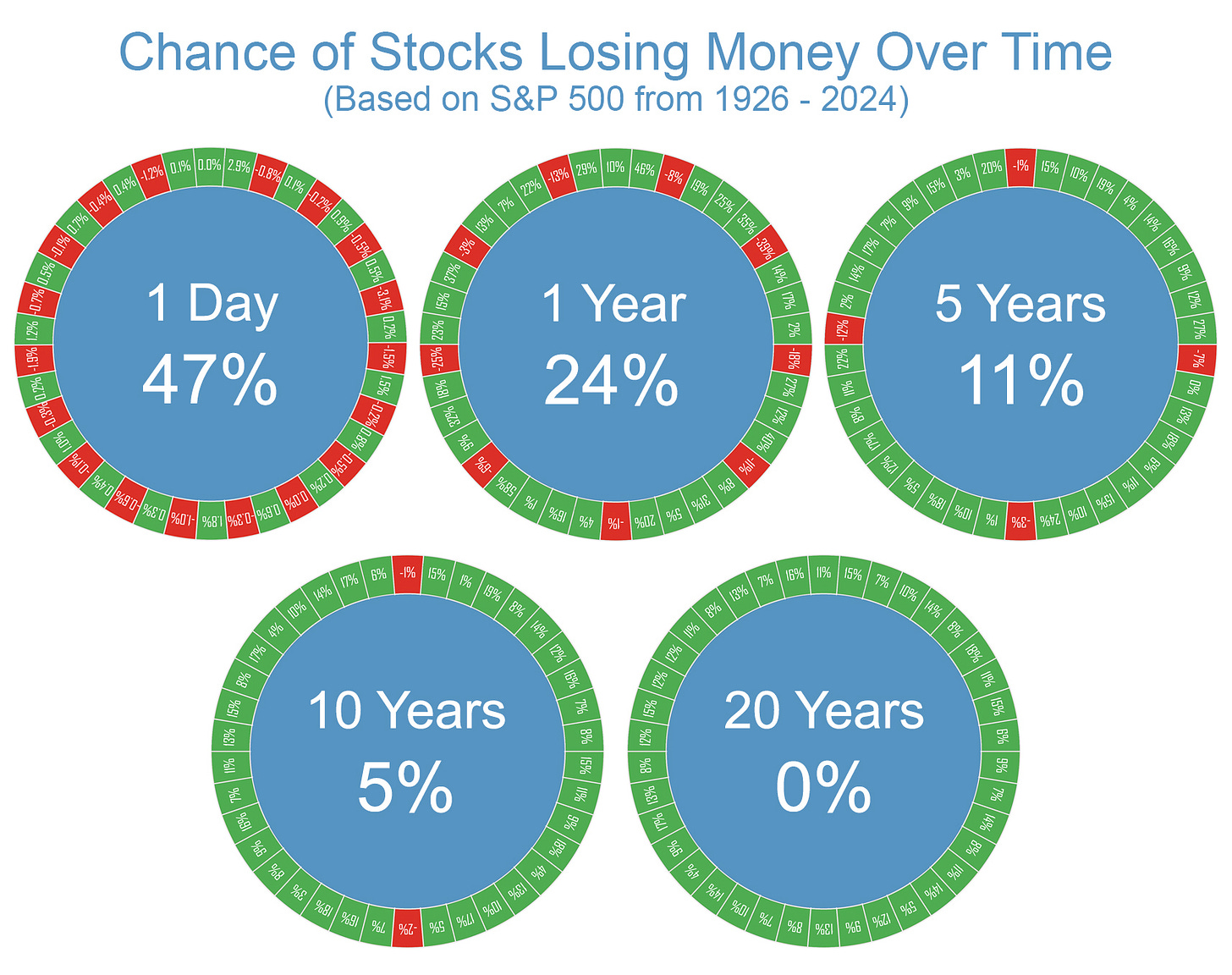Wine and Investing
How a vintner slogan from the late 70s can help you put stock market investing in perspective.
In the late 1970s, vintner Paul Mason used the slogan, “We will sell no wine before its time.”
The notion that certain things take time to mature—wine, trees, children, etc.—is something we readily accept. The amount of time required to reach maturity varies depending on what we’re talking about.
You wouldn’t expect a 10-year single malt scotch to be ready to drink after one year.
It may help you to apply the notion of maturity to investing in the stock market.
Stocks are volatile in the short run, and if you judge your stock performance after only one day—or even one year—you may be in for an unpleasant experience.
Worse still, you may conclude that stocks are always “risky.”
In previous posts, we’ve introduced Investment Return Wheels as a way to visualize the range of returns you can expect (based on nearly 100 years of stock market history) for various time frames. The returns for periods greater than one year are annualized.
A spin of the wheel would result in landing on a green space (you make money) or a red space (you lose money).
Viewing these side-by-side clearly illustrates how the chance of losing money decreases for longer investment time periods—i.e., as you allow your stock investments to mature.
Some Quick Takeaways
1 Day - If you invest in stocks for only one day, there’s a very good chance you’ll see the value go down (although it is still more likely to go up). And, you’ll hear about it.
Stock market “experts” spend an extraordinary amount of time focusing on one-day returns. It’s no wonder stocks seem so risky. Imagine putting a new batch of wine in a cask and tasting it the next day.
The results would not be good, but then you haven’t given it time to mature.
1 Year - Give it a full year, and the odds of losing money have fallen dramatically. Still, at 24%, the chance of losing money is high enough that you should be very cautious about investing your short-term portfolio in stocks.
On the plus side, if you avoid putting stocks in your short-term portfolio, there’s no need to stress about the daily ups and downs in the market.
5 Year - You can make a solid case for including at least some allocation to stocks when investing for a 5 year time period. Losing money over 5 years is historically low at 11%.
10 Year - At 10 years, stock investments have had time to mature. It is rare to have a negative return, and even then, the historically worst 10-year periods have only been around -1%.
20 Year - Imagine if financial “experts” spent more time talking about 20-year returns instead of 1-day returns. Your conclusions about how risky stocks are would be completely different. You would have never heard of a negative 20-year period (or a negative 15-year period, for that matter).
Your confidence in investing in the stock market would be significantly higher. This long-term view would likely result in making more money (by not overreacting to short-term market declines), and would dramatically reduce the level of stress you feel when talking about the markets. More money; less stress.
What Can You Do?
Long-term investors should focus on long-term risk and return. Expecting financial commentators to focus on the long-term isn’t going to happen, though.
This will never work for someone whose job it is to make daily comments on the markets.
They’re trying to make the stock market seem interesting and newsworthy. The reality is that investing in stocks should be boring—it plays out over long time periods.
The simple thing you can do is to only pay attention to stock market commentary that matches your investment timeframe (and even if you’re 65, at least some of your investments still have a longer-term focus).
When listening to a daily market recap, you might say to yourself, “This doesn’t apply to me because I’m a long-term investor and stocks take a longer time to mature.”
Best regards,
Stuart & Sharon



